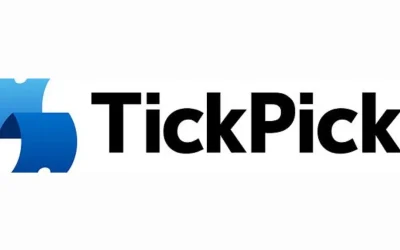SeatQuest.com is hoping that its unique answer to the question “How can I find the best seats?” will leave ticket buyers in the secondary market more satisfied than they have ever been. The company specializes in aggregating secondary ticket sales across the Web and then displaying the available seating on color-coded interactive event seating charts. This innovative approach allows secondary ticket buyers to view the exact locations and prices of all of the available seats for an event, making comparison-shopping straightforward and easy.
SeatQuest, founded three years ago by company chief technology officer Nomik Eden, Ph.D., spent its infancy in developing detailed workups of seating charts for various sports and entertainment venues in North America. Currently, the site has 3,200 venues mapped and ready to share with consumers. The company is in the process of developing contracts with partners that can then offer this innovative technology to ticket buyers.

James Ondrey, VP of Business Development for SeatQuest, is eager to bring this new model to the ticketing world: “Our current business model is to license this technology, what we call our visual search engine, for tickets to various people out there now, not just ticket brokers. Certainly there are a number of others [in related industries] who want to be part of selling tickets, Web sites like… Pandora, Songkick and Livekick. [We are] trying to do a couple of things for our partners, such as lift their conversion (increasing ticket purchases on their sites), and our seating charts have a cutting edge feel to them, sort of a viral aspect to them that we think can drive traffic to their Web sites.”
Ondrey notes that SeatQuest offers seating chart packages to potential clients at all levels of complexity, from the straight “seat level” arena-wide charts that one generally finds on sites, to more specific “section-level” and “row-level” views where the entire section or row is highlighted to show seats available in that space. Through any of these views, the consumer will see available seats in different colors corresponding to the seat’s price. Another click allows the customer to compare tickets with sellers’ fees added, in order to make clearer comparisons of final ticket costs. Packages available to SeatQuest clients range from a basic seating chart, such as those already on SeatQuest’s site, to more complex charts that can be customized for better integration of the information into the client’s own site.
Comparing SeatQuest to competing sites, Ondrey describes a key difference that makes his company stand out from the rest: “We’ve built our value on our venue coverage, on the [volume of] maps we have in our database and in keeping up with the dynamic nature of venue industry, which others are not doing well at all”. This technology affords the client the ability to reconfigure seating charts for specific events so that the available chart at any moment reflects exact seating for that event. Venue coverage certainly appears to be substantial as well: Ondrey recalled a recent company study which found that their 3,200 maps cover roughly ninety percent of the sports and entertainment venues served by the secondary market in North America, “and every day we’re adding new configurations.”
Addressing the current push for transparency in the secondary market, Ondrey claims that SeatQuest is poised to easily provide the ticket information necessary for today’s, and tomorrow’s, transactions. “[With proposed legislation requiring more specific information] on all tickets, everyone’s going to need that seating chart solution. Frankly, we think that static, status quo seating charts will become obsolete. Our prime concern is to let our partners be on forefront of the industry, showing that level of detail in the seating charts.”
But, one of the company’s most valuable assets is its ability to work with a range of needs.
“We have a lot of flexibility [in working with our partners]. We can provide just maps, or [even] the aggregate feeds of all the secondary market. The way we integrate with partners can be on different levels, depending on what they need,” Ondrey said. “Some customers want our White Label solution, the format of which is what you see on our website. Other customers may want to integrate [the technology] deeper into their own website, built into their programming language. We want to be flexible with the way we make it fit into their Web site.”




